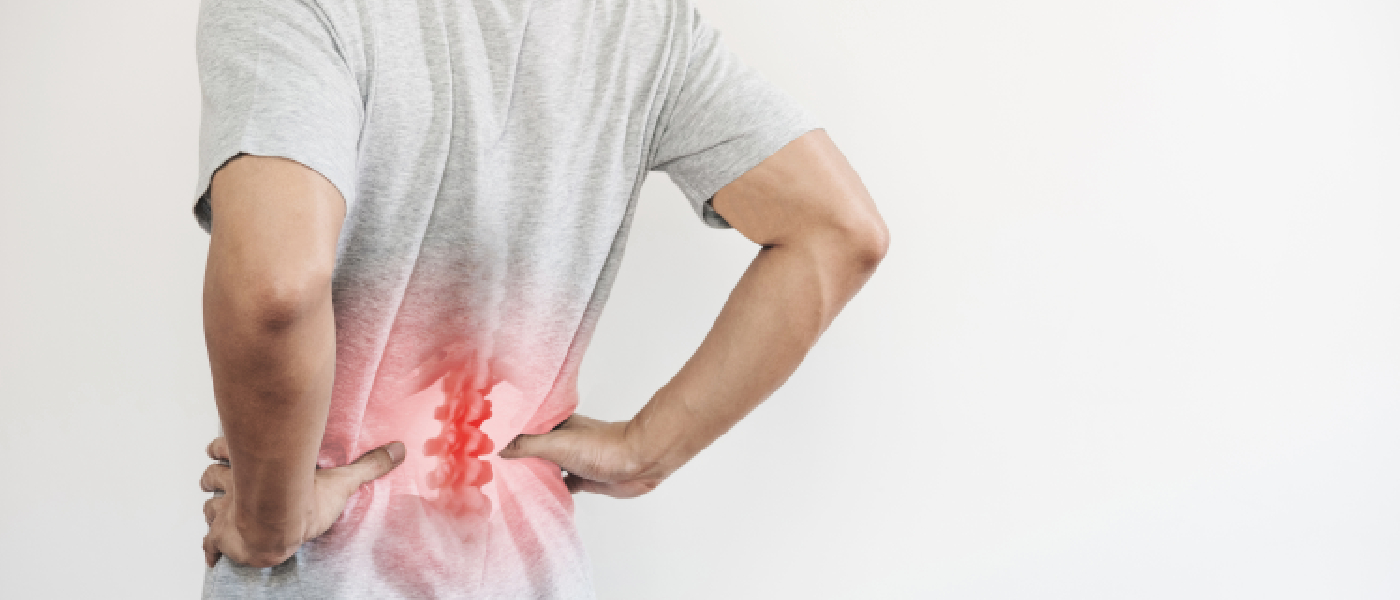
Lumbar Disc Hernia
A lumbar disc herniation, also referred to as a lumbar herniated disc, occurs when the cartilage between the vertebrae in the lower back deteriorates, tears, or shifts due to wear and tear or excessive strain. This can lead to compression of the nerve roots as the disc protrudes or ruptures from its original position. As a result, it may cause symptoms such as lower back pain, leg pain, leg numbness, and muscle weakness. Lumbar disc herniations most commonly happen in the last two lumbar vertebrae.
What Are The Causes of Lumbar Hernia?
The exact cause of a lumbar disc herniation is not fully understood, but it is believed to be influenced by genetic factors (partially hereditary) and activity-related risk factors. Lumbar disc herniations can occur at almost any age. While the condition is more commonly seen in older individuals, it can also develop in young patients with seemingly healthy discs. When there is weakness or tearing in the outer ring of the disc, herniation occurs. Several factors, including the following, can contribute to disc weakness:
- Aging and degeneration
- Excessive weight
- Sudden strain from heavy lifting.
How is Lumbar Disc Herniation Treated?
The treatment of lumbar disc herniation depends on the severity of the symptoms experienced by the patient. If the symptoms are mild, medication can be used to reduce the pain caused by the herniation. Painkillers and muscle relaxants are commonly prescribed for this purpose. However, if the patient is experiencing severe symptoms, surgery may be necessary for the treatment of lumbar disc herniation. Physical therapy is often recommended, with the aim of strengthening the muscles.
Between the bone structures called vertebrae, which form the basic skeletal structure of the body, there are discal structures that provide support and minimize friction during movements. Over time, these discal structures can degenerate or move out of place due to improper movements, heavy lifting, and similar reasons. When these discal structures shift, they can compress the nerves that exit between the vertebrae, particularly those leading to the legs. As a result, problems such as leg pain, numbness, and weakness can occur. In advanced stages of the condition, even issues like sudden urinary incontinence may develop.
%80-85 of herniated disc cases can be improved with Physiotherapy and exercise applications. In Physiotherapy, the use of superficial and deep heating agents helps increase blood flow and accelerate healing. Pain-relieving and muscle-strengthening electrical currents are applied to alleviate the patient's pain and strengthen weakened muscles.
Traction devices, powered by electricity, are utilized to apply force on the spine based on body weight. This assists in creating space between the vertebrae, reducing the size of the herniated disc, and relieving nerve compression. Under the supervision of a physiotherapist, specific exercises are performed to strengthen the back-supporting muscles, thus enhancing spinal stability. Additionally, following a well-designed diet program to achieve weight reduction can further alleviate pressure on the back, resulting in a decrease in symptoms.
Is Lumbar Disc Hernia Surgery Risky?
Lumbar disc hernia surgery is one of the most common procedures in brain and nerve surgery. Nowadays, it is not considered highly risky. The most preferred surgical approach is microsurgery performed using a microscope, which offers an ideal option. The surgery can be conducted under general or spinal anesthesia and typically takes around 1 hour. Patients can walk as early as 6 hours after the surgery. The overall success rate of the surgery is about 98%. The risk factors range from 3% to 5%, with infection being the most common risk. Other factors that may determine the risk include any additional health conditions the patient might have and their age.
Does Lumbar Disc Herniation Recur?
Approximately 5% of patients with lumbar disc herniation may experience a recurrence.
How to Prevent Lumbar Disc Herniation?
To prevent lumbar disc herniation, individuals with this condition should avoid gaining weight, refrain from heavy lifting, and avoid prolonged sitting or standing for extended periods. Overweight patients should focus on losing weight. It is essential to keep the lower back area extra warm in cold weather. Strengthening exercises for the muscles supporting the spine and engaging in backstroke swimming 2-3 times a week are valuable for maintaining spinal health.
How Common is Lumbar Disc Herniation?
Lumbar disc herniation is particularly common among individuals aged between 35 and 55 years. It is more prevalent in men than women. However, in our country, a significant portion of the population experiences lumbar disc herniation complaints.


